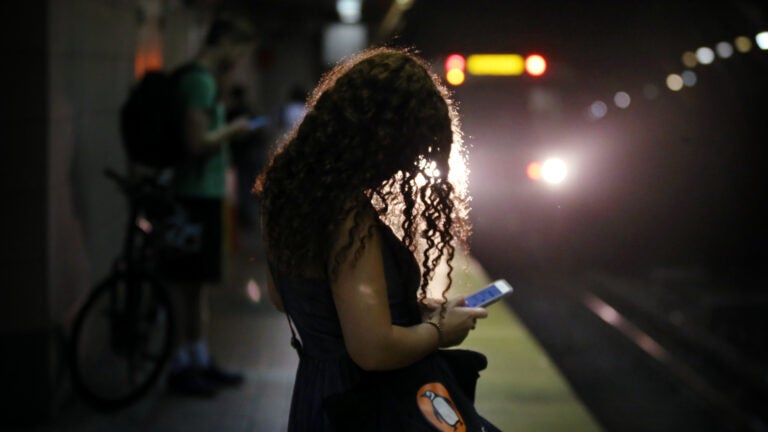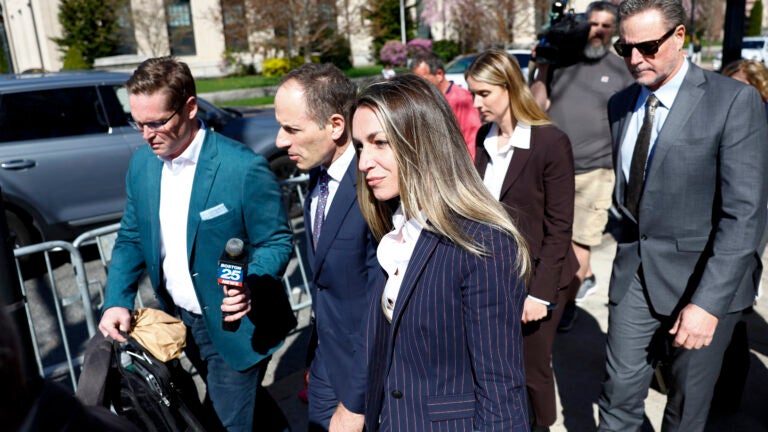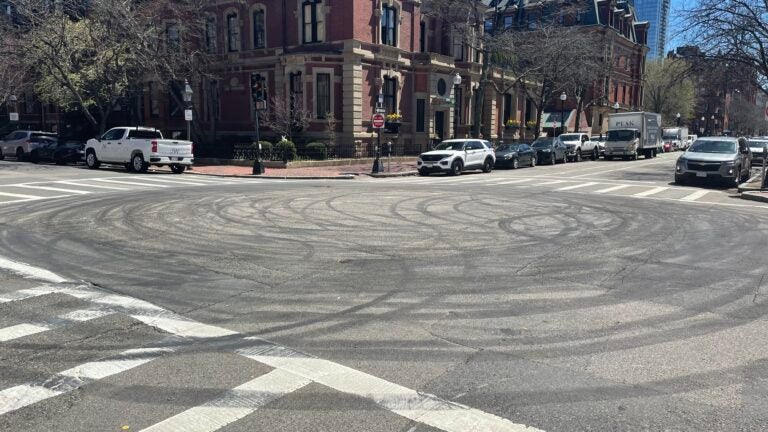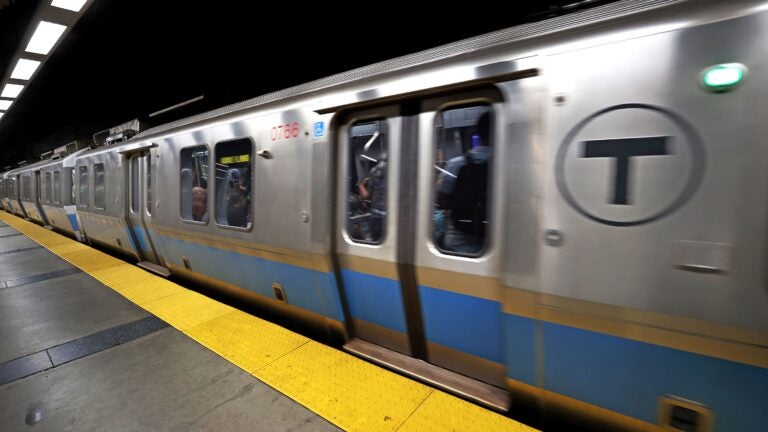Is the subway risky? It may be safer than you think
A study of coronavirus clusters in April and May in Austria did not tie any to public transit.

Five months after the coronavirus outbreak engulfed New York City, riders are still staying away from public transportation in enormous numbers, often because they are concerned that sharing enclosed places with strangers is simply too dangerous.
But the picture emerging in major cities across the world suggests that public transportation may not be as risky as nervous New Yorkers believe.
In countries where the pandemic has ebbed, ridership has rebounded in far greater numbers than in New York City — yet there have been no notable superspreader events linked to mass transit, according to a survey of transportation agencies conducted by The New York Times.
Those findings could be evidence that subways, commuter railways and buses may not be a significant source of transmission, as long as riders wear masks and train cars or buses never become as intensely crowded as they did in pre-pandemic rush hours.
If the risks of mass transit can be addressed, that could have sweeping implications for many large American cities, particularly New York, where one of the biggest challenges in a recovery will be coaxing riders back onto subways, buses and suburban trains — a vast system that is the backbone of the region’s economy.
When the city shut down in March, over 90% of the subway’s 5.5 million weekday riders abandoned the system. Even now, as the city has largely contained the virus and reopened some businesses, ridership is still just 20% of pre-pandemic levels, adding to the financial strain of New York’s transit agency, which relies on fare revenue for 40% of its operating budget.
“What we are seeing in other cities makes me optimistic,” said Toph Allen, an epidemiologist who co-wrote a report on coronavirus transmission and public transportation with the Tri-State Transportation Campaign, a transit advocacy group. “If you know that you have a transit system that is functioning in an area where there are no major outbreaks, you know transit can be safe.”
In Paris, public health authorities conducting contact tracing found that none of the 386 infection clusters identified between early May and mid-July were linked to the city’s public transportation.
A study of coronavirus clusters in April and May in Austria did not tie any to public transit. And in Tokyo, where public health authorities have aggressively traced virus clusters, none have been linked to the city’s famously crowded rail lines.
But public health experts warn that the evidence so far should be considered with caution. Ridership in other major cities is still well below pre-pandemic levels, tracing clusters directly to public transit is difficult, the quality of ventilation systems used to filter air varies, and the level of threat depends to a high degree on how well a city has reduced its overall infection rate.
“There are so many other factors that go into levels of risk and how you assess risk,” said Michael Reid, an assistant professor at the University of California, San Francisco School of Medicine, and a contact-tracing expert. “They are not equal comparisons.”
In fact, state and city officials have been unable to determine whether mass transit in New York contributed to the surge in March and April that devastated the city, killing more than 20,000 people.
The outbreak has exacted an especially devastating toll on transit workers. To date, over 4,000 have tested positive and 131 workers have died from the virus — nearly 90% of whom worked for the division that runs the city’s subways and buses.
For much of that time, riders were not required to wear masks, and the infection rate in the city was much higher than it is today, very likely making public transportation a riskier venue. (One study at MIT purported to show that the subway was a superspreader early in the pandemic, but its methodology was widely disputed.)
Still, some public health experts believe the experiences of other cities offer a blueprint for how to minimize the potential for transmission on public transit systems.
Among the range of urban activities, the experts say, riding the subway is probably riskier than walking outdoors but safer than indoor dining.
The low infection rates on some public transportation systems can be attributed, in part, to measures transit agencies have adopted, including mandating face masks; disinfecting trains and buses; and ramping up service and asking businesses to stagger work hours to reduce rush-hour crowding.
New York officials are trying to balance two goals: drawing as many riders back as possible while also avoiding sardine-can crowding. They have appealed to business leaders to have employees start at different hours, though the pressure on the system has eased notably since the shift toward working from home is expected to last for months, if not longer.
“Each of these things layers one on top of the other to make things safer,” said Don Milton, an environmental health researcher and aerosol transmission expert at the University of Maryland.
The nature of how people use public transit also may help explain why potential exposure levels might not be as high as some riders believe.
People tend to stay on trains or buses for relatively short amounts of time, compared with a day’s work in an office or an outing to a bar to see friends. Riders tend not to talk on the train, reducing the amount of aerosols they release. In many cities, lockdown orders and new work-from-home norms have minimized crowds on trains, making it easier to keep some social distance.
Riders seem to be wearing masks and adhering to new guidelines, officials said.
In New York, transit officials said a recent observational study of over 220,000 riders found that over 90% were wearing masks. The transit agency has handed out free masks to passengers.
Though some veteran riders might be surprised, the subway system also benefits from a robust ventilation system that is effective at removing viral particles from the air.
In New York’s subway trains, transit officials say, the filtered air that circulates through a car is replaced with fresh air at least 18 times an hour. That is a much higher than the recommended air-exchange rates in restaurants, where recycled air is replaced eight to 12 times per hour, or in offices, where it is replaced six to eight times an hour.
This sharply reduces the chances of a superspreader event on trains, as long as they do not become overly crowded, said Linsey Marr, an expert on the airborne transmission of viruses at Virginia Tech.
But once too many people pack a train, the ability to provide proper ventilation diminishes significantly. When riders are standing shoulder to shoulder, any viral particles a sick passenger exhales could be readily inhaled by another passenger — even if both are wearing masks.
Hong Kong is one city where public transit ridership is still lower than before the pandemic, and it has not “seen a big outbreak associated with public transit,” said David Hui, director of the Stanley Ho Center for Emerging Infectious Diseases at the Chinese University of Hong Kong.
But, he added: “If not for the work-from-home measure, both buses and the subway would be full of people. In that case, I believe there could have been a serious outbreak.”
In some places, ridership has rebounded more so than in New York, but none have had to grapple with overflowing public transit and how that could test their ability to keep the virus at bay.
In Beijing, subway ridership has risen to 59% of pre-pandemic levels; in Tokyo, Metro ridership has increased to 63%; in Berlin, ridership on buses and subways is between 60% to 70% of normal rates; and in Paris, ridership on the Metro has returned to 45% of normal.
“I am more vigilant in the Metro and careful not touching the bar or sitting on seats,” said Alain Raphael, 28, an engineer in a tech company in Paris. “I am less confident in bars, cafes and restaurants than riding the Metro.”
So far in New York state, where contact-tracing efforts are not as robust as in European and Asian countries, public health officials have not linked any new clusters to public transportation, according to state and city officials.
Contact-tracing experts warn that tracking an infection cluster to public transportation is particularly challenging because the chances of infected people remembering the precise train cars they were riding is unlikely and reaching those who were in that same car is nearly impossible.
“Transit is much more anonymous and relatively fleeting,” said Crystal Watson, a senior scholar at the Johns Hopkins Center for Health Security.
In the months since the height of the outbreak in New York, the Metropolitan Transportation Authority, which runs the city’s subway and buses, has invested hundreds of millions of dollars on the daily disinfection of train cars, distributed over 1 million masks to riders, and started public service campaigns encouraging riders to maintain social distance.
These efforts are as much about swaying public perceptions and regaining the confidence of commuters as they are about safeguarding public health, officials said.
“There is both a substantive public health goal and there’s a messaging and assuring goal as well,” Patrick J. Foye, the MTA’s chair, said.
Joan Stroud, 61, a family medicine doctor at NYU Langone Brooklyn Heights Medical, started driving from her home in Bedford-Stuyvesant, Brooklyn, to work in early May rather than taking the subway.
“New York City trains were already filthy,” she said. “I wasn’t going to get on one every day during a major wave of infection.”
But a month ago, she got back on the subway, which provides a faster commute, and has been impressed with the system.
“The trains are as clean as I’ve ever seen them,” she said.








Conversation
This discussion has ended. Please join elsewhere on Boston.com